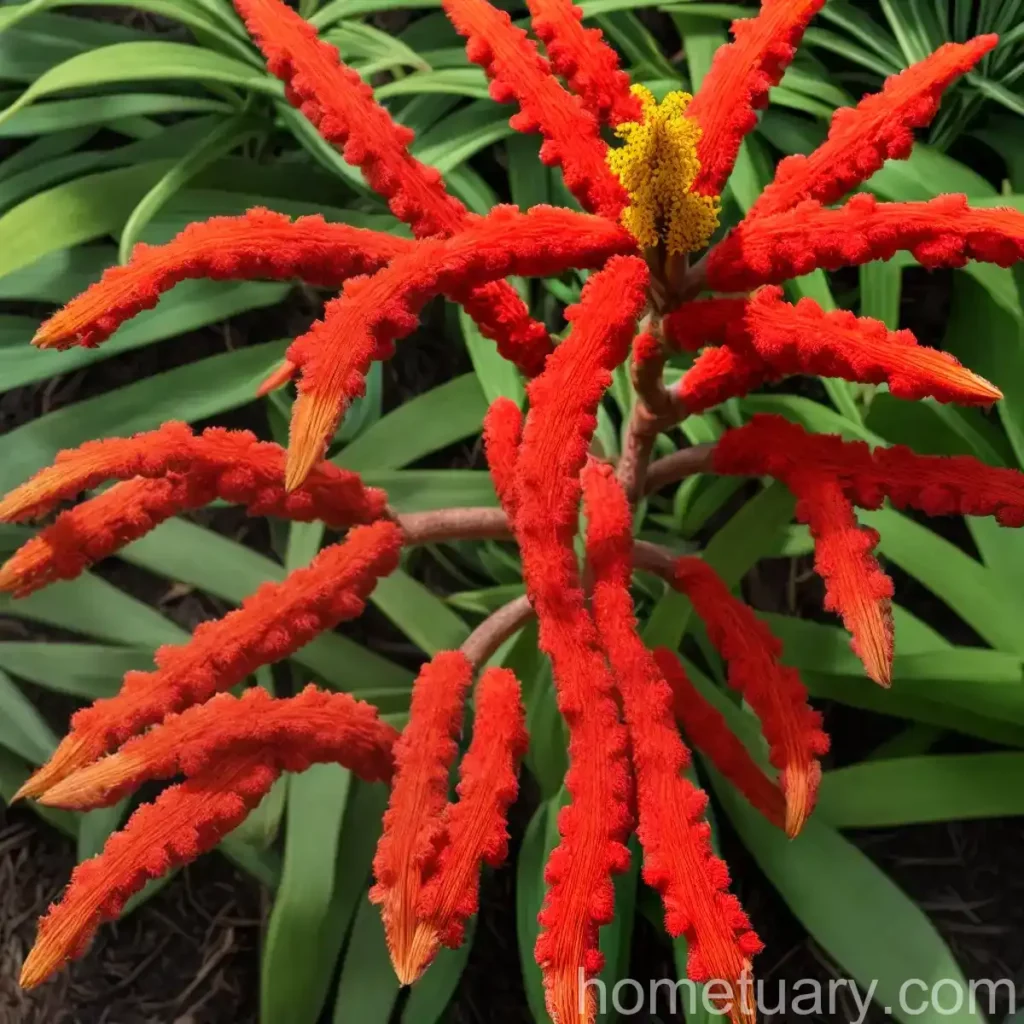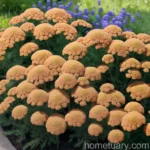Kangaroo Paw (Anigozanthos ‘Joe Joe Red’)
Introduction
The kangaroo paw (Anigozanthos ‘Joe Joe Red’) is a stunning and unique plant native to the south-west of Western Australia. Known for its vibrant and distinctive flowers that resemble the paw of a kangaroo, this plant has gained popularity among horticulturists and garden enthusiasts. In this comprehensive guide, we will delve into the culture, uses, care, and maintenance of the kangaroo paw, with a specific focus on the ‘Joe Joe Red’ variety.
What is the Kangaroo Paw?
The kangaroo paw is a genus of 11 species and multiple hybrids within the Haemodoraceae family. It is characterized by its striking tubular flowers that occur in a range of vibrant colors, including red, orange, yellow, and green. The ‘Joe Joe Red’ variety is particularly sought after for its intense crimson-red flowers and distinctive foliage.
Key Takeaways – Kangaroo Paw (Anigozanthos ‘Joe Joe Red’)
Here are the key takeaways for the kangaroo paw (Anigozanthos ‘Joe Joe Red’):
- The kangaroo paw, with its unique flower structure and vivid colors, is a visually striking addition to any garden or landscape.
- ‘Joe Joe Red’ is a specific variety of kangaroo paw known for its deep red flowers.
- This plant is relatively low-maintenance and thrives in well-draining soil and bright sunlight.
- Kangaroo paw has various cultural, medicinal, and decorative uses, making it a versatile addition to a garden or landscape.
- Proper care and maintenance are essential to ensure the health and longevity of the kangaroo paw.
Culture
Understanding the cultural requirements of the kangaroo paw is essential for successfully cultivating and caring for this unique plant.
Uses
The kangaroo paw (Anigozanthos ‘Joe Joe Red’) holds several uses, including:
- Ornamental: Its vibrant and distinctive flowers make it a popular choice for ornamental plantings in gardens and landscapes.
- Cut Flowers: The unique flowers of the kangaroo paw make it a sought-after choice for floral arrangements and bouquets.
- Medicinal: Some indigenous Australian communities have traditional medicinal uses for the kangaroo paw, utilizing its properties for various health remedies.
Water
Proper watering is essential for the health and vitality of the kangaroo paw.
Watering Requirements
| Growth Stage | Watering Frequency |
|---|---|
| Establishment | Regular, to keep soil moist |
| Flowering Period | Regular, moderate watering |
| Dormant Period | Minimal, occasional watering |
Sunlight
Optimal sunlight is crucial for the kangaroo paw’s growth and flowering.
Sun Exposure Requirements
| Light Conditions | Kangaroo Paw Response |
|---|---|
| Full Sun | Ideal for healthy growth and bloom |
| Partial Shade | Tolerated, but may affect flowering |
Fertilizer
Proper fertilization contributes to the overall health and vigor of the kangaroo paw.
Fertilization Schedule
- Use a balanced, slow-release fertilizer in spring to support growth and flowering.
- Avoid excessive fertilization, as it can lead to poor flowering and potential root damage.
Soil
The right soil conditions are crucial for ensuring the kangaroo paw’s health and growth.
Soil Requirements
- Well-draining soil is essential to prevent waterlogging and root rot.
- A mix of sandy and loamy soil is beneficial for kangaroo paw cultivation.
Pruning
Pruning helps maintain the kangaroo paw’s shape and removes old growth to encourage new flowering.
Pruning Techniques
- Remove spent flower stalks to encourage continuous blooming.
- Prune dead or damaged foliage to promote plant health.
Propagation
Several methods can be used to propagate the kangaroo paw, including division and seed propagation.
Propagation Methods
- Division: Divide established clumps in early spring to create new plants.
- Seed Propagation: Collect ripe seeds and sow them in well-draining soil in spring for new plant growth.
Container Popularity
The kangaroo paw is well-suited to container cultivation, making it a popular choice for potted plant enthusiasts.
Container Gardening Tips
- Use well-draining potting mix to ensure adequate moisture control.
- Select a container with drainage holes to prevent waterlogging.
- Place containers in full sun to promote healthy growth and flowering.
Common Diseases and Pests
Understanding and identifying common diseases and pests is crucial for effective kangaroo paw care and maintenance.
Disease Diagnosis
- Ink Disease: Characterized by black spots on leaves, caused by the fungus Phytophthora cinnamomi.
- Root Rot: Excessive moisture can lead to root rot, leading to wilting and decline.
- Leaf Spot: Circular, dark spots on foliage may indicate a fungal infection.
Common Pests
- Aphids: These sap-sucking insects can cause distortion and yellowing of leaves.
- Spider Mites: Small arachnids that can cause stippling and webbing on plant foliage.
- Slugs and Snails: These pests feed on young shoots and can cause extensive damage to the plant.
Botanist’s Tips
Here are some expert tips for cultivating and caring for kangaroo paw plants:
- Mulching: Apply a layer of organic mulch around the plant to conserve moisture and suppress weeds.
- Deadheading: Regularly remove spent flowers to encourage continuous blooming.
- Overwintering: Protect plants from frost and cold temperatures in cooler climates to prevent damage.
Fun Facts
- The kangaroo paw is the floral emblem of Western Australia.
- It is named for its unique tubular flowers that resemble the paw of a kangaroo.
- The vibrant flowers of the kangaroo paw are sought after by native wildlife, including birds and insects.
Conclusion
The kangaroo paw (Anigozanthos ‘Joe Joe Red’) is a stunning and unique addition to any garden or landscape. With its vibrant flowers and relatively low-maintenance nature, it is a popular choice for ornamental plantings. By understanding its culture, care, and maintenance requirements, enthusiasts can ensure the health and longevity of this captivating plant.
For more information and resources on kangaroo paw care and cultivation, consider exploring the following external links:















